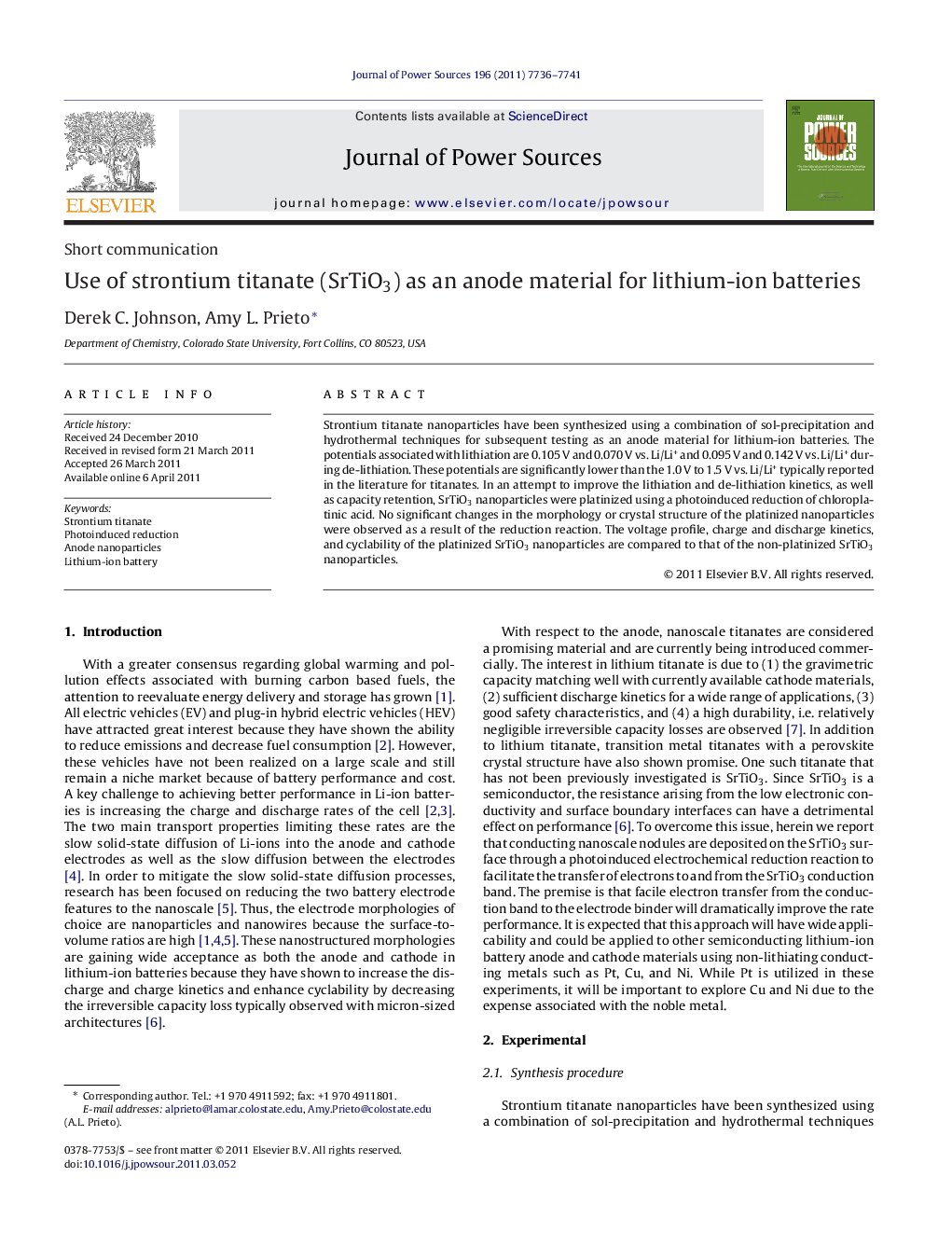| Article ID | Journal | Published Year | Pages | File Type |
|---|---|---|---|---|
| 1293397 | Journal of Power Sources | 2011 | 6 Pages |
Strontium titanate nanoparticles have been synthesized using a combination of sol-precipitation and hydrothermal techniques for subsequent testing as an anode material for lithium-ion batteries. The potentials associated with lithiation are 0.105 V and 0.070 V vs. Li/Li+ and 0.095 V and 0.142 V vs. Li/Li+ during de-lithiation. These potentials are significantly lower than the 1.0 V to 1.5 V vs. Li/Li+ typically reported in the literature for titanates. In an attempt to improve the lithiation and de-lithiation kinetics, as well as capacity retention, SrTiO3 nanoparticles were platinized using a photoinduced reduction of chloroplatinic acid. No significant changes in the morphology or crystal structure of the platinized nanoparticles were observed as a result of the reduction reaction. The voltage profile, charge and discharge kinetics, and cyclability of the platinized SrTiO3 nanoparticles are compared to that of the non-platinized SrTiO3 nanoparticles.
► SrTiO3 is a potential anode material for lithium-ion batteries. ► Pt nodules are deposited ex situ onto the surface of nanoparticles of SrTiO3. ► The rate performance of platinized SrTiO3 nanoparticles is greatly enhanced.
